Don Alfonso 1890 is located high up on a hillside on the Amalfi Coast, in the sleepy little village of Sant Agata. The nearest city is Sorrento, and although it is only six miles away it is a good half an hour drive up the narrow winding roads of the hill leading to Sant Agata. The nearest airport is Naples, and the 40 mile (65 km) drive from there takes 90 minutes or more depending on traffic. If you are driving yourself then it may be easiest to stick to the lengthier main road route rather than trying to navigate the most direct route to Sant Agata from Sorrento up the hill, which involves some pretty hair-raising driving up some remarkably steep and narrow "roads".
Once you have made it to Sant Agata, you will find Don Alfonso 1890 next to the village church, and if you drove here yourself then you will probably be in need of a stiff drink. The establishment has a couple of outside terraces for just this purpose, and also has eight rooms to spend the night. This is a family run business, open in its current form since 1982. The restaurant name refers to the year when the current family's grandfather returned to Italy from the USA and opened a hotel. The restaurant opens only during the summer season, from late March to late October, and in addition to the restaurant there is also a cookery school here.
The dining room is brightly decorated, white with pink upholstery, with well-spaced tables and good lighting. You can peek into the kitchen from certain tables. The kitchen is orchestrated by Ernesto Iaccarino and his father Alfonso, the dining room seating around 50 people at capacity.
There were tasting menus at either €140 (£120) or €170 (£145), as well as a full a la carte choice. The cooking very much reflects the produce of the local area. The restaurant owns an eight hectare farm called Le Peracciole a few miles away on the steep slopes directly opposite Capri, where tomatoes and the famous Amalfi lemons are grown, amongst many other fruit and vegetables. There are over a thousand olive trees there, and they also grow aubergines, peppers, pumpkins, figs, peaches, pears, apricots and herbs for use in the restaurant, as well as using eggs from the farm chickens and honey from the beehives. During the season from June to October the very ripest tomatoes (both cherry tomatoes and the San Marzano variety) are picked daily and transported up the hillside for use in the restaurant kitchen. These appear in various dishes, and are the best tomatoes that I have ever tasted. If you are staying here for a while then it is worth asking if it is possible to take a tour of the farm. It takes about half an hour to get there, the last part down a series of hairpin bends and tracks only accessible on foot or by narrow vehicles. It is not an ideal outing for those who suffer from vertigo, but is fascinating and the view looking out over Capri is stunning.
There is an extensive wine cellar within the main property, and one well worth a visit as it extends deep into the earth down a long stone staircase. At the bottom of it, 35 metres below ground, hams and cheeses are aged. The tunnel/cellar was only rediscovered about thirty years ago, and an archaeologist has dated it to the 6th century BC. It may have originally been built as an escape tunnel for the owner of the building that was on this spot all that time ago; it connects to the bottom of a well in what is now the garden of the property. The cellar holds around 25.000 bottles, and the list, which these days arrives on an iPad, offers nearly 2,000 distinct labels. As well as deep coverage of the regions of Italy there are bottles from as far afield as Georgia, Slovenia and Israel, amongst other locations. Examples at this visit were Cecubo Matilde 2012 at €45 for a bottle that can be found in the high street for around €34, Jermann Dreams 2013 at €100 compared to its retail price of €54, and Ronco Gnemez Chardonnay 2014 at €80 for a wine that will set you back around €60 in a shop. At the grander end of the list were labels such as Ornellaia Bolgheri Superiore 2013 at €280 compared to its retail price of €151, and Castello Di Ama La Cassucia Chianti Classico 1988 at €500 for a bottle whose current market value is €175. Although the priciest wine was Romanee Conti 1971 at a little matter of €14,000 (its current market value is actually more than this at €15,677) a nice touch was that there were literally dozens of wines at €45, rather than just one or two token cheap bottles, as so often occurs in restaurants these days. Hence you have plenty of choice if you want a modest bottle of wine.
The first meal of this trip began with a nibble of an aubergine "sandwich" filled with buffalo mozzarella and basil, the aubergine being grown on the restaurant's nearby farm. The flavour was spectacular, and though a simple dish this very much reflects the kind of food served here (18/20). Another amuse bouche was tender squid served with ricotta cheese and a light vegetable jelly, over which was poured a yellow pepper soup. Again the flavour of the vegetables was most impressive, the peppers in particular a world away from what we are used to seeing in the UK (18/20).
Breads are made from scratch in the kitchen daily, a selection of assorted loaves including olive bread and seed bread (17/20). The first formal starter was egg and fine beans with black truffle. The egg was unusually good, and the truffle added a luxurious touch, though for me this was not quite in the league of the nibbles (16/20). Better was a salad of summer vegetables, including a ravioli of vegetables and a tomato sorbet. Tomatoes were prepared in three different ways, alongside more peppers and an olive crisp. Again the flavour of the tomatoes was extraordinary, in particular the sorbet (19/20).
Spaghetti with mackerel and a basil sauce was another winner, the pasta having lovely texture, the mackerel palpably fresh and the basil working nicely with the fish (18/20). Also excellent was capelli with pork, yellow cherry tomatoes, seasonal vegetables (celeriac, carrot, onion) and summer truffle. The textures and flavours were terrific, the quality of the produce really coming through (19/20). This was followed by a deceptively simple dish of a soup of crab and tomato served in a bowl with a baked bread crust. The intensity of the tomato flavour was quite remarkable, and the bread crust served as a vehicle for dipping (easily 19/20).
Red mullet was served with lemon gnocchi, capers, and three sauces: a rocket emulsion, a garlic sauce and a balsamic and grape sauce. The mullet was excellent, the gnocchi light and delicate and the sauces interesting (17/20). Even better was guinea fowl filled with pistachios, served with potatoes, saffron cream and two different chilli sauces, one mild and the other a little spicier, as well as a fennel chip. The bird was lovely and the quality of the pistachios striking, the spices nicely judged with the fennel bringing an additional texture (19/20).
Melon sorbet on a pistachio crumble was a refreshing pre-dessert (16/20), followed by lemon dessert that involved a lemon profiterole dipped in creme Chantilly served in a hollowed out lemon, decorated with spun sugar. This was a little better than I recall from my precious visit, with enough sharpness to cut through the richness of the cream (17/20). Coffee was pleasant though not the very best I have tasted in Italy.
Service was led by the charming Livia Iaccarino and Mario Iaccarino, and was friendly and highly professional. The bill came to €223 (£190) a head, with pre-dinner drinks, a bottle of the lovely Jermann Dreams and some further wine.
At a further dinner I tried a risotto of langoustine with an emulsion of sea urchin, caviar and langoustine. The caranaroli rice had good texture, having nicely absorbed the lovely stock, and the shellfish was certainly fresh and of good quality (16/20) but this was not in the league of the stunning risotto at Le Calandre, surely the reference for how to make perfect risotto. Much better was fried cod with buffalo yoghurt ice cream, green padron pepper, sweet and sour lemons and little lemon chips. I am not normally a big fan of cod but this was superb, and the lemon elements brought just the right degree of acidic freshness to the dish (19/20).
Also good was fillet of beef from Benavento, cooked medium rare in a bread crust and served with spinach and buffalo mozzarella with a sauce of the cooking juices, a herb mousse with basil and garlic and a spicy cherry tomato sauce. The beef had excellent flavour and it was good to see that the sauce had a genuine chilli bite rather than just a suggestion of spice, as can often occur in high-end restaurants (18/20). A coffee dessert comprised a coffee cup shaped biscuit filled with coffee zabaglione on top of a layer of coffee mousse. This had plenty of deep espresso flavour and showed good technique (18/20). This was better than a soufflé of candied fruit with cinnamon served with spiced honey iced ice cream. This was fine (16/20) but I have had much better soufflés elsewhere. This meal was €210 (£178) per person, including pre-dinner drinks and a bottle of Jermann Capo Martino.
At a third dinner, we started with an excellent nibble of langoustine tail wrapped in a batter stained with cuttlefish ink and then deep-fried. The shellfish had lovely sweetness and was precisely cooked (18/20). A further nibble was a prawn with basil and black olive wrapped inside an onion casing, which was enjoyable though not in the league of the langoustine that preceded it (16/20).
Spaghetti puttanesca is a classic pasta diish, made with tomatoes, olive oil, capers, garlic, olives and anchovies. The version here was enlivened by a touch of chilli, which worked really well. The true origin of the name of the dish (literally "whore's pasta") is lost in time, and may be because it was quick for prostitutes to make between the visits of their clients, but no-one really knows for sure. The dish was glorious, the pasta having lovely texture, and above all the fabulous tomatoes here being the star of the show, with just the right level of spice (19/20).
The final savoury dish that we ate here on this trip was a signature dish of the kitchen. Vesuvius rigatoni is a reworking of an historical recipe. The dish is arranged so that the pasta is shaped like a volcano, with the tomato ragu sauce seeming to emerge from the top like lava, with pork meatballs, a few peas and some chopped egg lurking inside the volcano. It is a baked pasta dish shaped inside a timbale, finished with mozzarella sauce, basil leaves and the rich ragu. This looks lovely and was very enjoyable to eat, though I actually preferred the puttanesca for its sheer intensity of tomato flavour (18/20).
We finished with a very good chocolate ice-cream and an overly sharp lemon sorbet. The sorbet doubtless varies a bit due to the specific lemons picked on the restaurant farm, but nonetheless this was too acidic even for a lemon lover like me. The bill tonight came to €160 before tip including drinks, the pasta dishes being a bit cheaper than some of the other courses that we had on previous evenings. A typical price per person for three courses and sharing a simple bottle of wine would be about €175 (£140 at the current exchange rate).
Although there is a touch of inconsistency at times in the standard of the dishes here, the best ones are magnificent. The quality of the vegetables in particular sings out, but pretty much all the ingredients used are top notch. As well as the lovely food, Don Alfonso 1890 exudes a genuine charm and welcome from its staff and the family that run it, who clearly have a real passion for the place. It is a delightful place to visit, a lovely restaurant in a stunning part of the world. Incidentally, Don Alfonso 1890 has a sister restaurant in Macau, another in Marrackech and this winter a further restaurant outpost will open in Helena Bay in New Zealand, north of Auckland near the furthest tip of the north island. Don Alfonso is a glorious place to visit, the cooking making the most of the superb local produce.
BookFurther reviews: 28th Oct 2011

























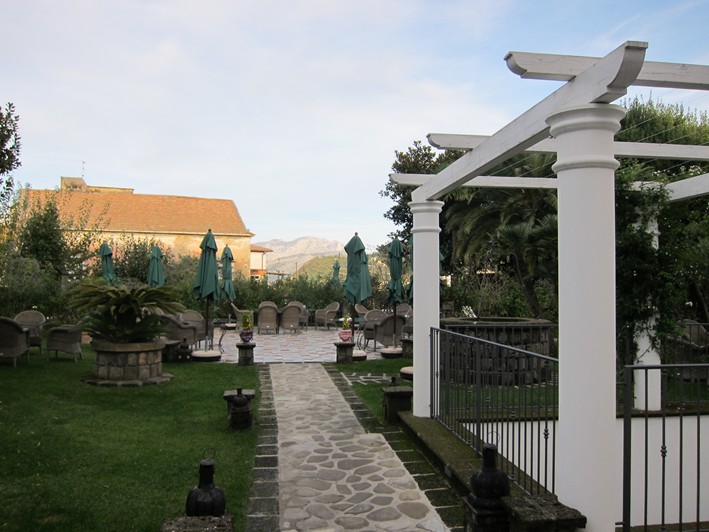
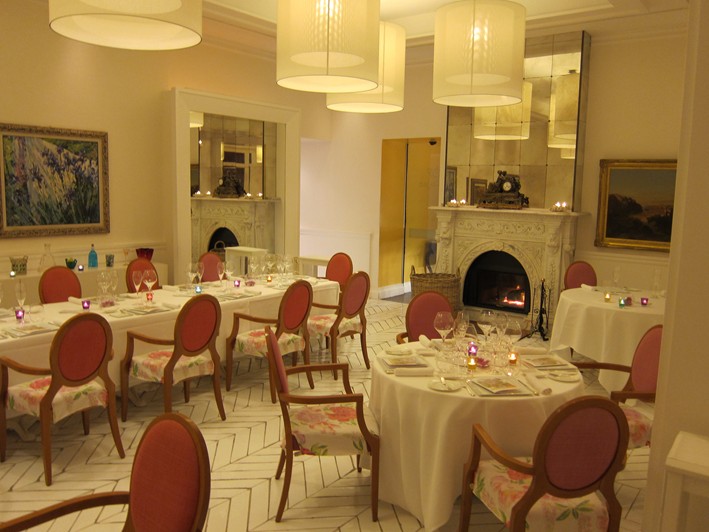
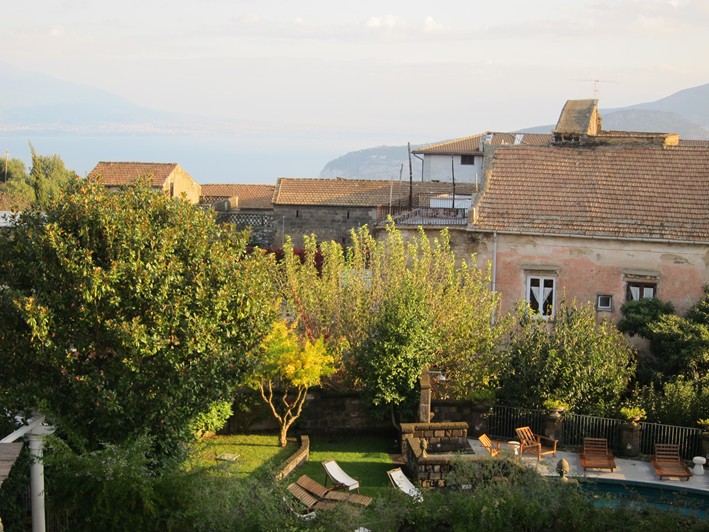
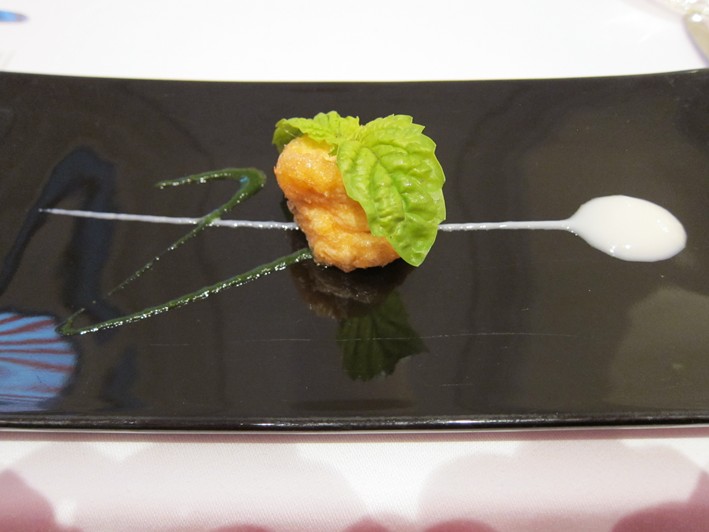

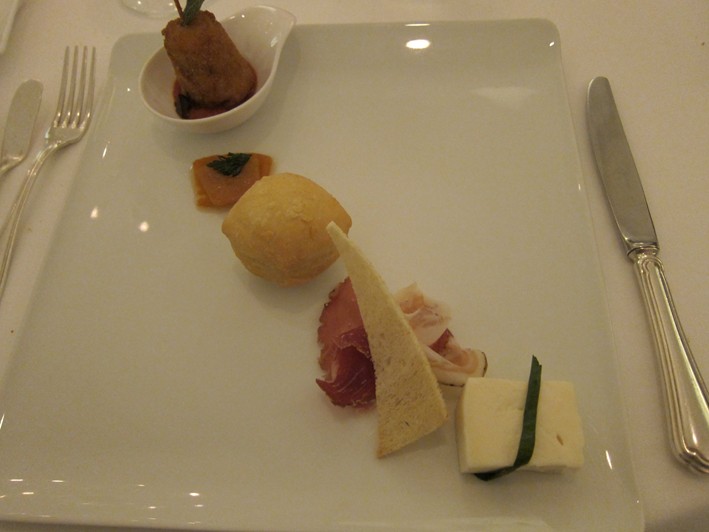


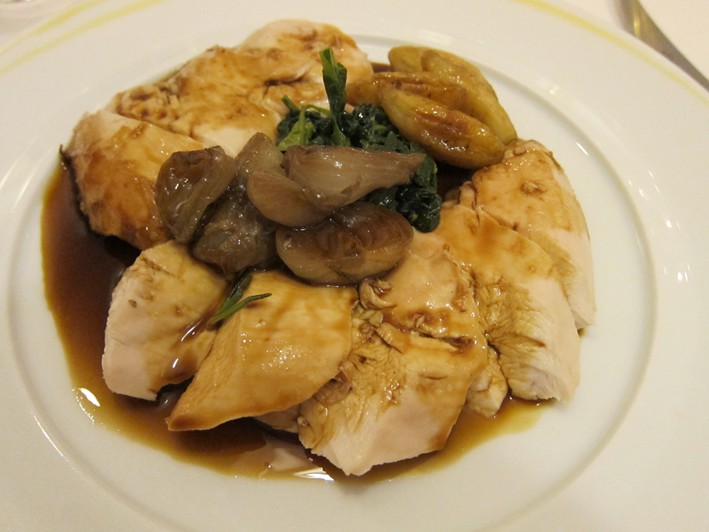

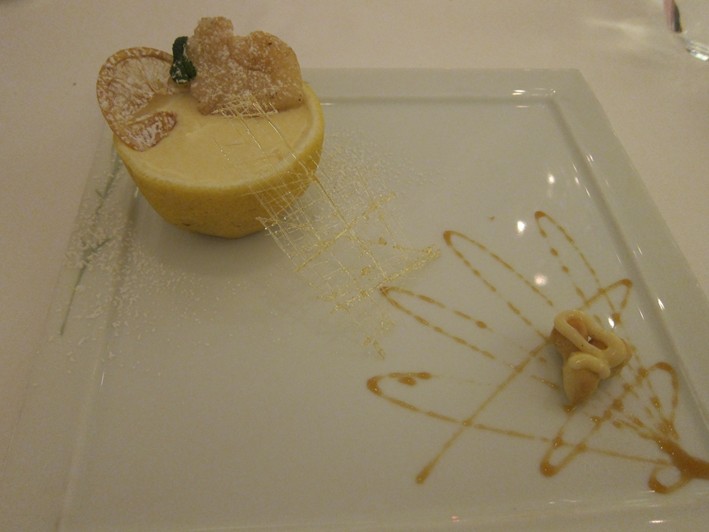
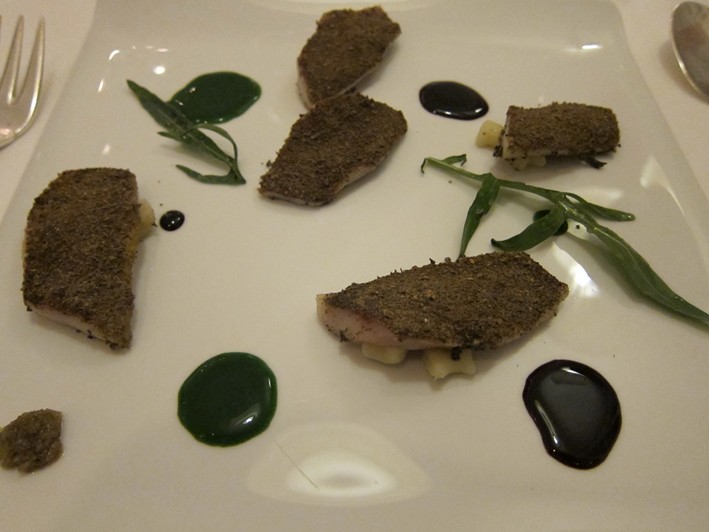
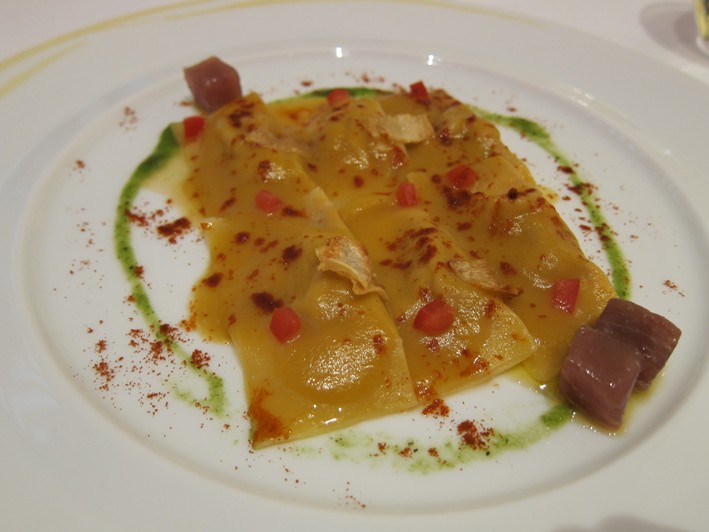
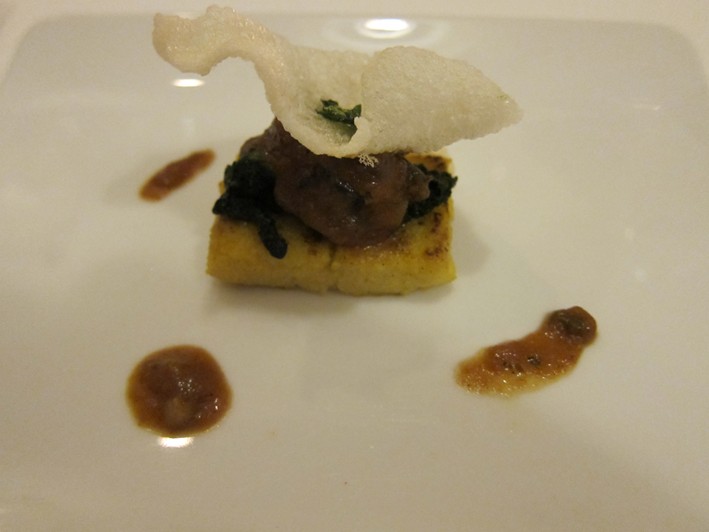


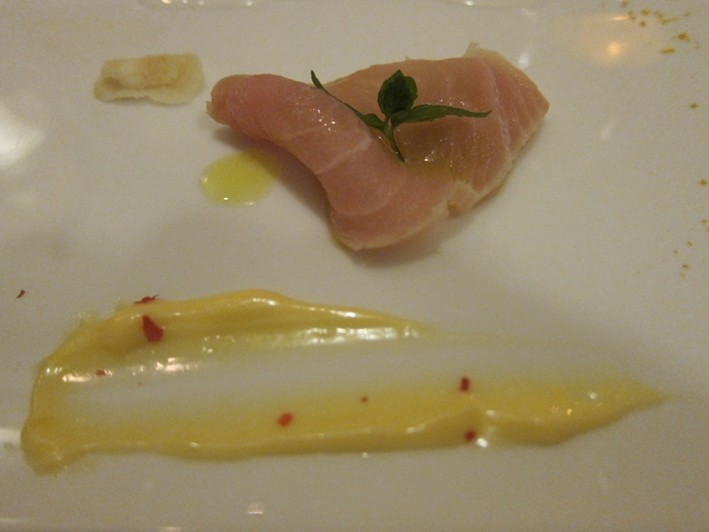
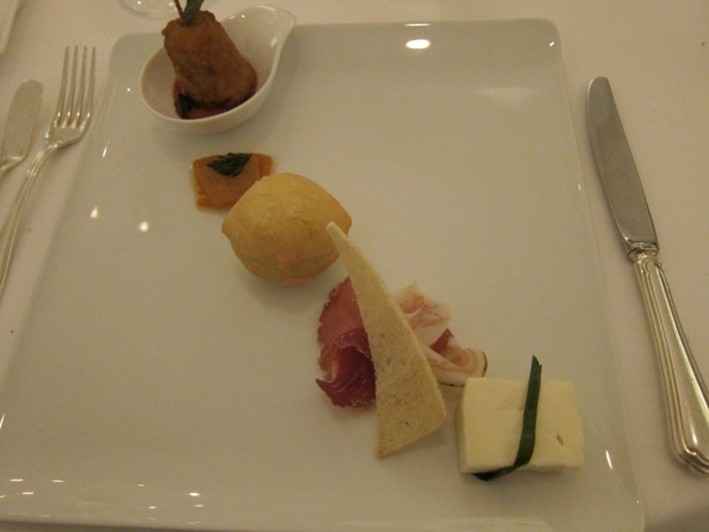




Matthew Paice
Three meals in a row at Don Alfonso - one of our favourites - what a treat! Did you get used to the dining room by the end of it?!